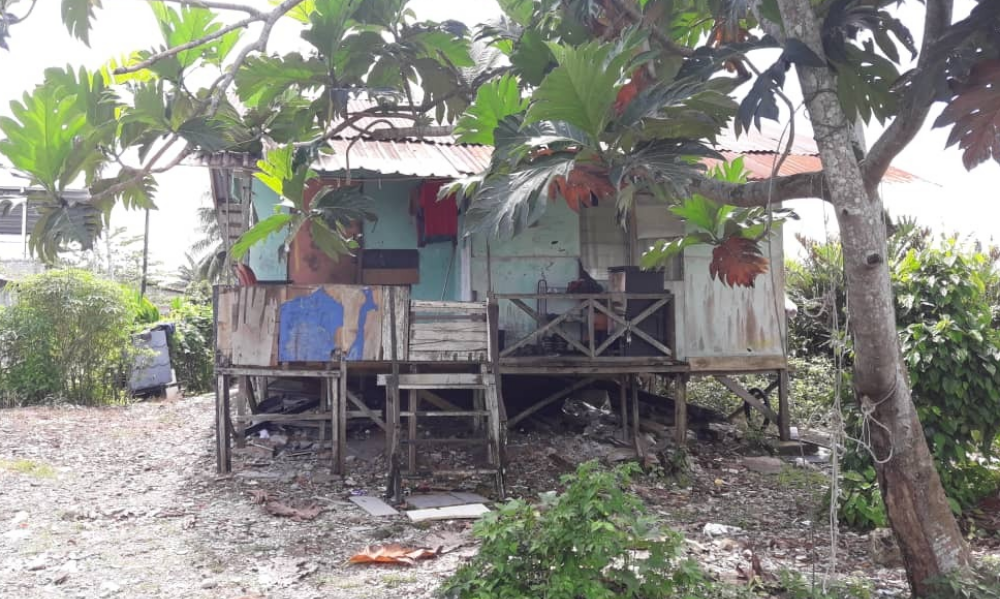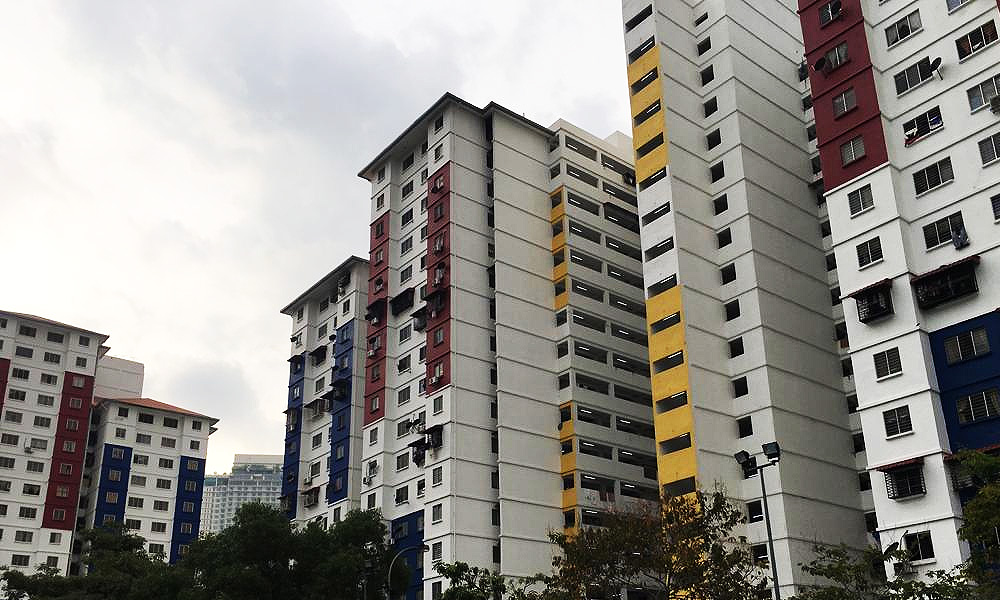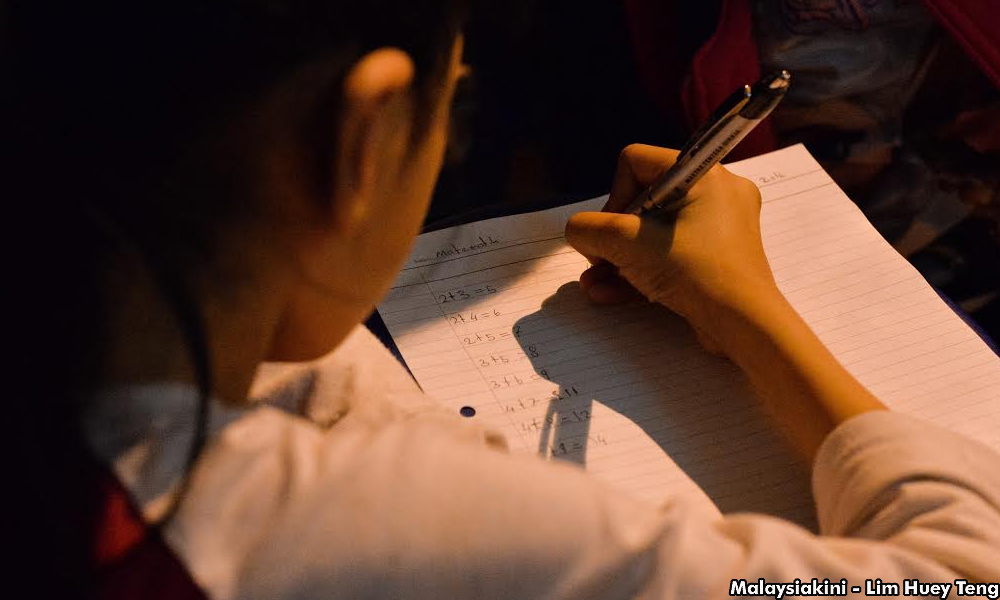
MP SPEAKS | I recently visited a family in Setiawangsa, my constituency. They live in a People’s Housing Project (PPR) flat. Sixteen of them live in a 750 square metre unit: The parents, children and grandchildren.
The head of the family - I’ll call him Pak Dollah - apologised when my team and I sat down with them on the floor of their living room. That’s where most of their children and grandchildren sleep every day, so there was no room for furniture.
Since the 1980s, Pak Dollah had worked in a prestigious hotel, serving faithfully. He could take back as much as RM3,000 in salary and allowances.
But with the movement control order (MCO) and the hotel industry in doldrums, this has shrunk to his basic pay of RM1,300. And he considers himself lucky to still have a job.
“Alhamdulillah, the hotel union is strong. It’s difficult for the hotel to lay people off.”
Dollah has tried to sell cakes on a small scale since the MCO. This makes him about RM20 a day.
His wife is looking for work but it’s hard at her age. One of his daughters was abandoned by her husband and she works in a nearby pharmacy.
Another child is studying early childhood education at a college. But it’s hard keeping his sons in education after they finished SPM, he tells me.

The price of chicken has gone up. Fish has become rare in their diets. Dollah recently quarrelled with a TNB meter reader over how high his electricity bill had gone up. They still have power though: he is paying the sum in instalments.
Another story, this time involving a man called Pak Mat. He came to my service centre recently to ask for help.
Pak Mat is almost 70 and a stroke survivor. To support his family, he took part in a hire-purchase programme for a taxi - not long before the MCO started.
Every day, whether he could work or not, he has to pay RM26 for his taxi. If he works 12 hours - 8am to 8pm - he can get around RM60.
But with his age and health condition, this has become harder, what more with the MCO.
He came to us for help because one of his children got an offer to study at a government college in the East Coast. The cost of it is too much for them.
Another child is in college in Kuala Lumpur. With learning activities being moved online, this child has complained that it’s hard to keep up with a poor quality handphone and is asking for a laptop.
A prime example of underemployment
Another child has a diploma but wasn’t able to get a job in that line. That’s a prime example of underemployment, a problem we rarely hear of compared to unemployment.
“I’m under a lot of pressure,” said Pak Mat sadly.
There are many Pak Dollahs and Pak Mats - not forgetting their non-Malay counterparts, the so-called Maniams and Ah Chongs - in Kuala Lumpur.
The idea that there aren’t many poor non-Malays isn’t true. In Setiawangsa, there’s a place called Kampung Baru Air Panas, a new village with PPR developments that have large non-Malay components. Urban poverty is a major problem in our country.
Many of the people in this group have jobs - some earn as much as RM3,000 a month. This might be comfortable in rural areas (especially with the stronger family and support system there) but it doesn’t go very far in our cities and towns.
Hence the lot of Malaysia’s urban poor. They’re a group that Umno and PAS elected representatives - most of whom hold rural seats - often ignore or dismiss.

The urban poor is made up of all races - although the bulk is Malay. People still believe that most Malays still live in rural areas like in colonial times.
This is the narrative that the New Economic Policy (NEP) was based on. Indeed, this perception has lingered on until today even though the situation has clearly changed, thanks in part to the success of the NEP.
In the 1970s, only 15.5 percent of urban dwellers in Peninsular Malaysia were Malays. In 2016, 68 percent of the bumiputera community live in cities. Of Malaysia’s collective urban population, 56 percent are bumiputera.
My father, a senior civil servant who was directly involved in the implementation of the NEP, believes that this policy, whether directly or indirectly, encouraged the Malays to head to the cities.
“Squatter” settlements sprouted up. Rapid economic developments created new job opportunities.
Soon, the government felt that with better education and healthcare facilities in urban areas, the migration process should be opened more widely. The size of cities across the country also grew.
It soon became popular for both government and opposition legislators to champion urban migrants. Idris Ibrahim, the MP for Setapak (1974—1982) was called the “King of the Squatters” (Raja Setinggan) for defending them.
During the tabling of the 1995 Budget, the-then finance minister Anwar Ibrahim launched what became the PPR on a major scale with an allocation of RM2.6 billion (around RM4.74 billion today)

The focus of the programme at the time was Gombak, Wangsa Maju, Ampang, and Kerinchi. The construction of 58,200 houses was approved.
From 1998, the government began demolishing the houses of the urban migrants on a large scale.
Two years later, the “Zero Squatter Policy” (Dasar Setinggan Sifar) was launched with a 2005 target date for completion. While the goal was not met then, it did have a major impact.
But the “Zero Squatter” approach did not really address the problem of urban poverty.
A lack of progress on housing, wages and addressing the high cost of living means that urban poverty and exclusion are huge challenges today, perhaps more so than its rural counterpart.
In the 1990s, many of my friends at the La Salle Petaling Jaya school were from Kampung Baiduri and Kampung Medan.
But it was only when I started being active in my party’s Kelana Jaya branch from 2005 onwards, including engaging in grassroots work at the Desa Mentari, Desaria, Kampung Lindungan and Desa Hormat, that I saw for myself their milieu.
When the teaching of Mathematics and Science in English (PPSMI) was being implemented, I learned first-hand the difficulties it caused for primary school students from these areas in terms of learning.
Their parents also had a tough time helping them out with their homework. Even their teachers found teaching these subjects in English difficult.

Via the Mentari Project, we started a voluntary tuition programme in there. Besides tutoring the children there, we took them on trips to Petrosains, Kidzania, and elsewhere.
Middle-class families in the Klang Valley may find these excursions a normal thing but they are often beyond the means of their less well-off counterparts.
Some of the latter had not even set foot in KLCC once, even though they lived in Petaling Jaya.
Two years ago, there was a stir due to a Unicef report about poverty and poor nutrition affecting children in Kuala Lumpur.
Indeed, the problem was apparently worse in Kuala Lumpur, although economically the city is on a par with its Asian peers.
Unfortunately, some quarters - including certain Malay leaders - blame the urban poor for their own plight; such as by alleging they are lazy. There are also those who blame foreigners or non-Malays for the problems the community faces.
The latter is especially dangerous as it is easy to enflame such sentiments, given the economic difficulties the people are currently facing.
There are, regrettably, also the so-called “liberal” Malays and their non-Malay counterparts who believe that racialist sentiments are inexorably linked to the Malays and Islam because many Malay voters choose to back ethnic or religious-based parties.
All of these views are mistaken. How could anyone say that the families of Pak Mat and Pak Dollah are lazy?
The fact is that they work hard in unimaginable conditions to support themselves. They desperately want their children to get an education so they can have better lives than them.
Also, the majority of the Malays in the constituencies I have served in - both in Seri Setia and Setiawangsa - have no problems at all with their Chinese and Indian counterparts.
The real “enemies” are arguably the country’s profiteering elite. These are people who are up in arms when the minimum wage goes up by RM100, in the next breath complaining that Malaysians and Malays are unreliable workers.
There are not a few of them who have no qualms to pay bribes to bring in foreign workers.
Also in the mix are Malay elites who scream “Hidup Melayu” and brandish the keris supposedly in defence of “Malay rights” but send their children to international schools so much so the latter can’t even speak Malay properly.
But it’s also wrong to assume that the entire Malay workers are ignorant, backward and prejudiced (ironically revealing the prejudices of the groups who feel this is the case) when they are basically struggling to survive.
Given the twin pressures of a poor economy and attempts to inflame ethnic tensions, it is no wonder the Malays are increasingly wondering who they can depend on.
A grave mistake the Democrats in the US and the Labour Party in the UK made was to have ignored, or rather, only paid lip service to the anxieties of their majority communities. This is arguably what contributed to the rise of Donald Trump and Brexit.
Understanding the problems of and giving a voice to the urban poor is a duty for all: Malays and non-Malays.
Indeed, given that the Malay community is growing and that urban areas are now increasingly Malay, change in Malaysia can’t take place without the support of the Malays who have the least, but who work the hardest.
NIK NAZMI NIK AHMAD is the MP for Setiawangsa and chair of the Parliamentary Special Select Committee on Defence and Home Affairs. He is also PKR organising secretary. - Mkini



No comments:
Post a Comment
Note: Only a member of this blog may post a comment.